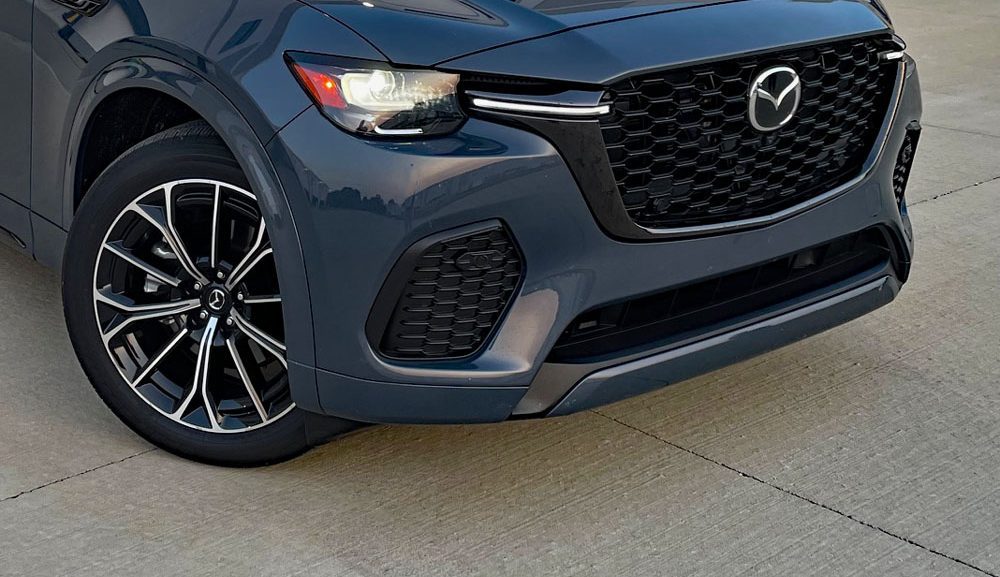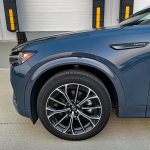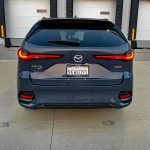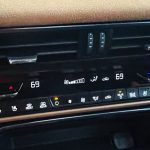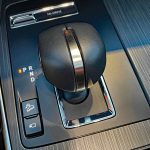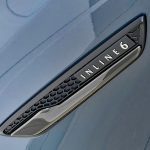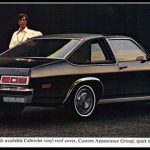
 Text by Tom Appel
Text by Tom Appel
2025 Mazda CX-70 3.3 Turbo S Premium Plus AWD
Specs
Class: Midsize Crossover
Color: Polymetal Gray
Seating Capacity: 5
Miles driven: 131
Real-world fuel economy: 22.4 mpg
| CG Report Card | |
|---|---|
| Room and Comfort | B+ |
| Power and Performance | B+ |
| Fit and Finish | A |
| Fuel Economy | B+ |
| Value | B |
| Report-card grades are derived from a consensus of test-driver evaluations. All grades are versus other vehicles in the same class. Value grade is for specific trim level evaluated, and may not reflect Consumer Guide's impressions of the entire model lineup. | |
| Big & Tall Comfort | |
| Big Guy | A |
| Tall Guy | B+ |
| Big & Tall comfort ratings are for front seats only. "Big" rating based on male tester weighing approximately 350 pounds, "Tall" rating based on 6'6"-tall male tester. | |
| Drivetrain | |
| Engine Specs | 340-horsepower 3.3-liter |
| Engine Type | Turbo inline six mild hybrid |
| Transmission | 8-speed automatic |
| Drive Wheels | AWD |
Driving mix: 60% city, 40% highway
EPA-estimated fuel economy: 23/28/25 (city, highway, combined)
Fuel type: Premium gas
Base price: $55,950 (not including $1375 destination charge)
Options on test vehicle: None
Price as tested: $57,775
Pros and Cons
The great: Roomy and refined
The good: Good power, decent fuel economy, premium-feel cabin
The not so good: Low-speed drivetrain surging
Review
Did the world really need the CX-70? Mazda’s newest U.S.-market offering is priced just below the midsize CX-90 crossover in the brand’s U.S.-market lineup, but is approximately the same size and differs only gently in design. Indeed, the CX-70 is less than an inch shorter than the CX-90 in overall length, and rides on the same 123-inch wheelbase.
So, what’s the deal? The CX-70 comes only with two seating rows, versus the ‘90s three. That, and some styling differences, mostly designed to make the CX-70 appear sportier, account for most of the difference between the two largest and most-expensive Mazda models.
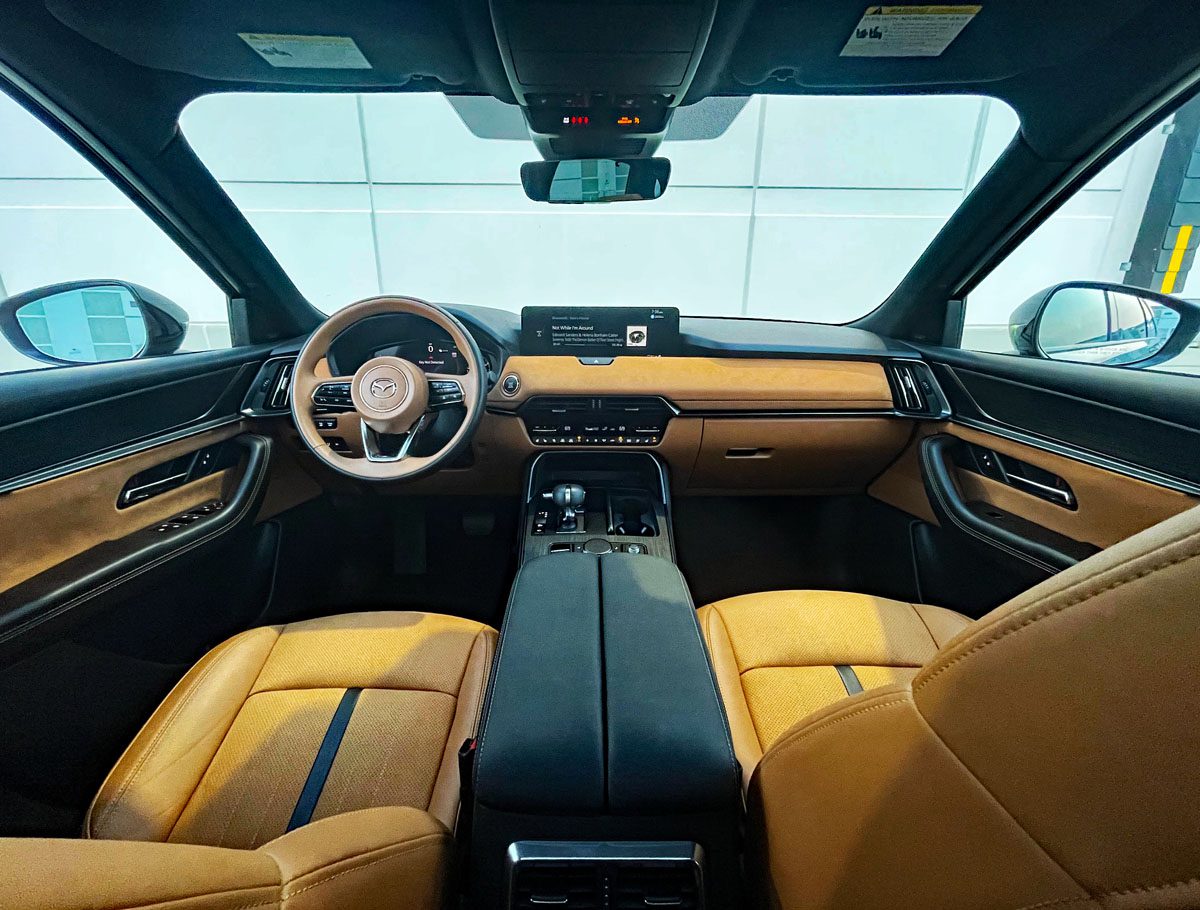
5-Passenger Crossover
Given that the Volkswagen Atlas and Atlas Cross Sport are also differentiated by seating-row count—and are at least different looking—we wonder if the CX-70 should really have been called CX-90 Sport, or even CX-90 Coupe. Though the latter seems to warrant at least some design modification.
All that said, the CX-70, like the CX-90, represents a big move forward in Mazda’s stated plan to take the brand upscale. As noted earlier, the ’70 features just two seating rows, the rearmost row offered as a 3-person bench.
Mazda Moves Upscale

For those not in the know, Mazda has begin applying two-digit model names to its newest—more-upscale—models. Thus, the CX-30 has replaced the CX-3, the CX-50 is offered as an upscale version of the still-offered CX-5, and the CX-90 has replaced the CX-9. The CX-70 is a new offering, though a compact crossover dubbed CX-7 was offered through 2012.
Prices and Trim Levels
The CX-70 is offered in five trim levels, compared to the CX-90’s six. Perhaps anticipating slightly less sales volume, the ’70 is not offered in base Select trim, and thus is not available for a starting price under $40,000, which the CX-90 is.
For 2025, the CX-70 lineup ascends through 3.3 Turbo Preferred ($41,900), 3.3 Turbo Premium ($47,355), 3.3 Turbo Premium Plus ($50,355), 3.3 Turbo S Premium ($53,905), and topline 3.3 Turbo S Premium Plus ($57,405).
A quick not about prices: Mazda has indeed begun moving its crossover portfolio upmarket, or at least has added premium trim levels to the lineup. The last CX-9 models ranged in price from $40,125 to $49,835 across five trim levels. So, are the new Mazdas worth the extra money? We’ll get to that shortly.
Engines
Power for the CX-70 comes from the same 3.3-liter inline six as the CX-90, and in the same two power output configurations. Featuring mild-hybrid assist, the engine is rated at 340 horsepower in trim levels featuring an “S” in the model name, and 280 horsepower in lesser models. Both versions of the powerplant mate exclusively to an 8-speed automatic transmission. Mazda recommends premium-grade gasoline for the 340-horse version of the engine, regular for the 280. All Mazda CX-70s come standard with AWD.
Safety Equipment
Note, too, that all CX-70 trims come standard with Mazda’s i-Activsense comprehensive suite of safety and driver-assistance features, including:
- Lane-departure warning
- Lane-keep assist
- Vehicle-exit warning (warns occupants of coming vehicles when opening doors)
- Forward obstacle detection
- Automatic high-beams
- Adaptive cruise control
- Consumer Guide recently spent a week behind the wheel
Consumer Guide recently spent a week behind the wheel of a 2025 3.3 Turbo S Premium Plus in Polymetal Gray. Including destination charge, our test Mazda came to $57,775.
CX-70 vs. CX-90
It should as no surprise at this point, that the CX-70 looks and feels very much like the CX-90. The cabin dimensions are nearly identical, and passenger space, front and rear, is the same. The same goes for dashboard and instrumentation, and for the most part, cabin trim.

What all this means is that the CX-70 is a very nice crossover, and that it is, like the CX-90, surprisingly luxurious. The cabin is plenty roomy, and large doors—front a rear—make for easy entry and departure. There’s also plenty of space behind the wheel, even for bigger guys. The control system is a variation of Mazda’s oddly controversial rotary-dial system, which this editor finds rather practical. Thy system, once familiar, makes for easy eyes-on-the-road operation. Not all of our editors like “the knob,” so be sure to time playing with the infotainment system to be sure you’re cool with the setup.
Cabin
Rear-seat accommodations are as friendly as those up front. And, thank to a generous amount of glass, the cabin feels open and airy. Sound levels, too, are kept low, making for easy conversation between the seating rows.
Power and Performance
Underway, the CX-70 feels solid and refined. After a brief delay, the big Mazda moves off from a stop smartly enough, and has plenty of power in S trim to keep up with, and pass, urban traffic. Likewise, there’s ample reserve thrust for easy highway passing and merging maneuvers. Our editors did detect a certain amount of mild surging and slowing in routine low-speed driving. We suspect the effect is related to the CX-70’s mild-hybrid system. The phenomenon is generally mild, and not detected by any passengers we queried.
Ride and Handling
Though the CX-70 feels a little heavy when pushed, it corners with athletic confidence, and leans only gently in aggressive cornering. The brakes, too, feel reassuringly strong. Ride quality is a CX-70 strong point; the midsize Mazda settles in nicely on the highway, and absorbs most surface irregularities with an easy calm.
Value
The CX-70 enjoys a little more cargo space than the CX-90, but not much. That’s okay, though, as the cargo area is plenty roomy, and the rear seatbacks easily fold flat to accommodate larger loads.
While we remain baffled that the CX-70 and CX-90 are treated as separate models, we find the ’70 to be a surprisingly refined, and ultimately luxurious entry in the midsize crossover segment. Prices rise quickly on higher trim levels, but lower versions of the CX-70 are quite attractively priced. We heartily recommend the newest Mazda to anyone looking for a premium-feeling 2-row crossover. We just wish they had called it CX-90 Sport.
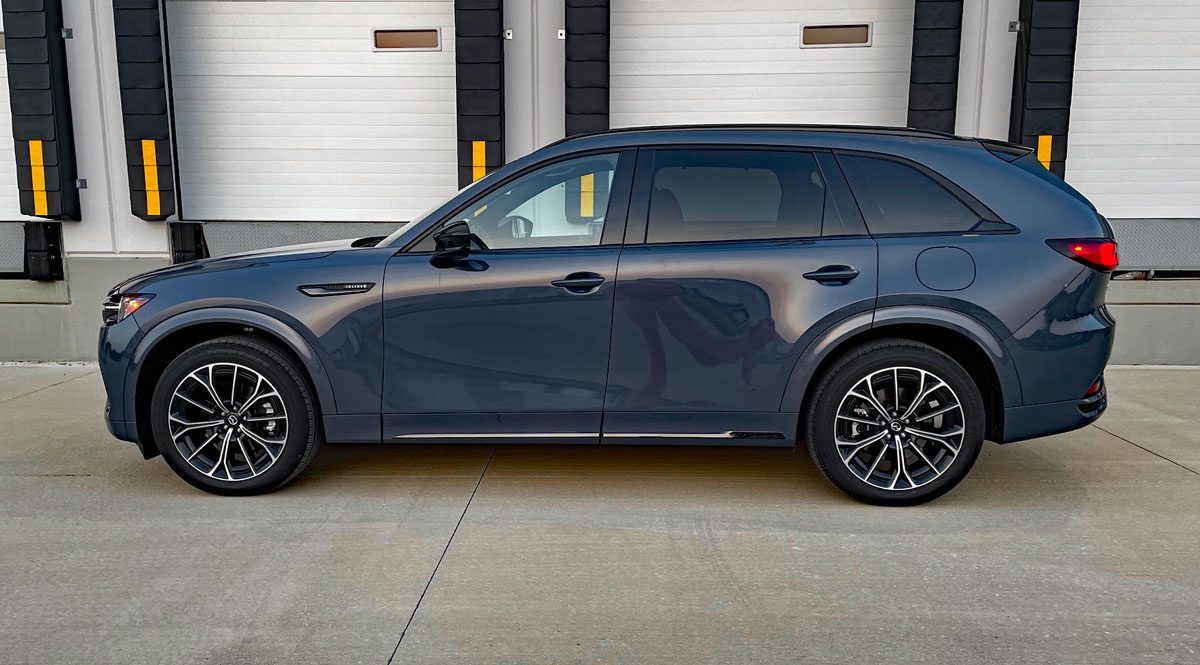
Listen to the Car Stuff Podcast
Mazda CX-70 3.3 Turbo S Premium Plus Pictures
Click below for enlarged images

